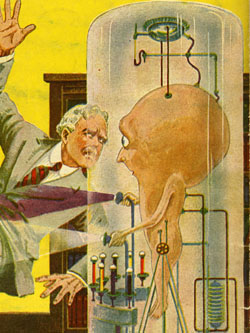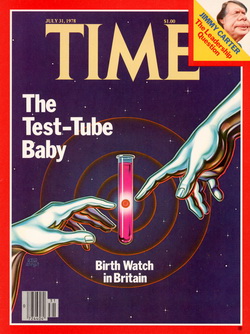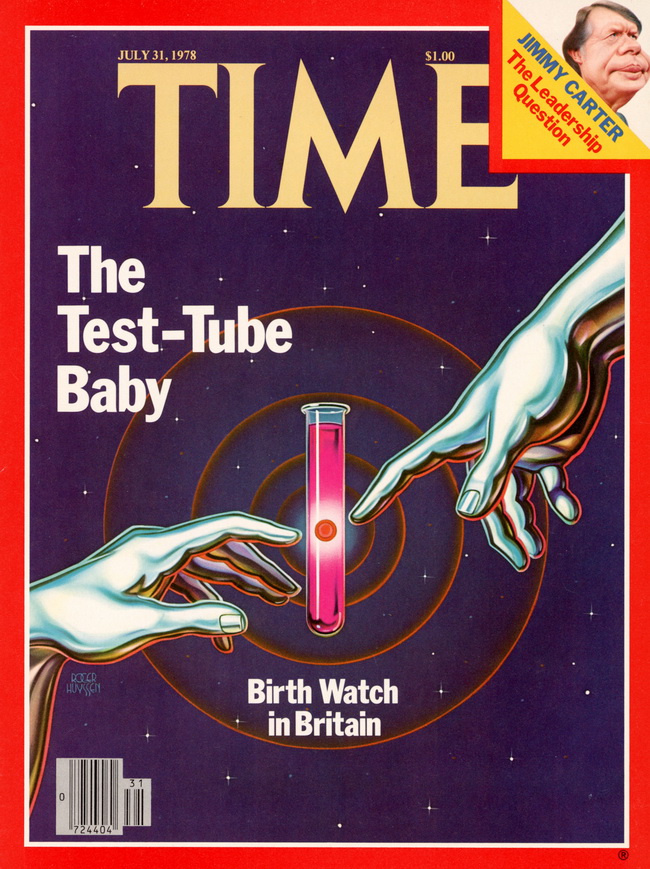Test-tube babies. Visions of socially controlled and technologically rationalized reproduction flourished in the 1920s and ’30s, especially among radical scientists, writers and artists. The most famous is the novel Brave new world (1931) by Aldous Huxley, brother of scientist Julian. This imaginary future society replaced natural reproduction entirely. Human embryos developed in giant state-run hatcheries into uniform sets of useful citizens. These dystopias drew heavily on contemporary ideas about rational human breeding and echoed interwar concerns about the rise of the totalitarianism, mass production and demands for women’s rights. Huxley’s vision remained relevant during the Cold War and in artistic and media commentary on new reproductive technologies.
In the late twentieth century, new biomedical interventions charged embryo images with contradictory meanings even as they also became routine.
There is not one visible embryo; there are many. The test-tube dreams of the 1930s began to come true in the 1970s, just as voluntary abortion was legalized in the West. This made embryo images more prominent and diverse than ever before. But the identities of these boundary creatures are far from secure. An ultrasound baby in a family album, a creature on an anti-abortionist placard, a patient for monitoring and experimental surgery, an unwanted growth in a woman’s body, raw material for laboratory science? Object or subject? Child, fetus, abortus, embryo?
Images of embryos have been powerful weapons in high-profile controversies. Opponents of intervention insisted on visual continuity between unborn and born. Champions of embryo research increasingly represented clusters of cells. Campaigners for ‘a woman’s right to choose’ avoided pictures altogether. Yet while embryo and fetal imagery is obviously and prominently politicized, much of the time embryology is taken for granted in schools, clinics and laboratories around the world.





